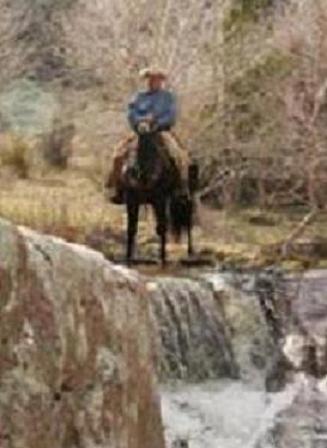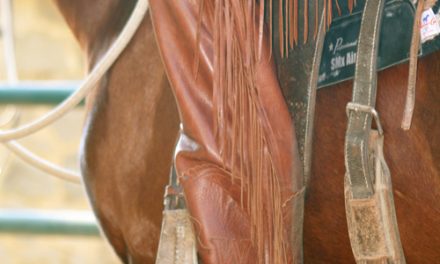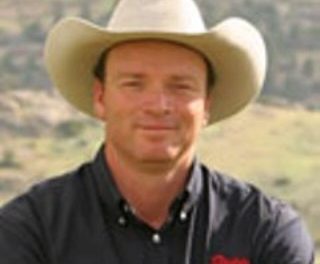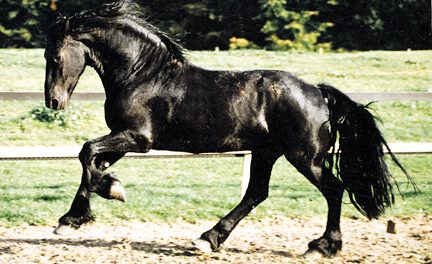 Many people have dealt with a horse who is barn sour or buddy sour. The behaviors brought on by these problems can be frustrating and dangerous for both the horse and rider. Fortunately, they can be solved with variations on the same approach. The basis for this is establishing your horse’s respect and getting his attention before putting him in the situation that is causing the problem. If you don’t feel safe working on these problems riding, do groundwork before mounting. As always, the most important thing is that you and your horse are safe.
Many people have dealt with a horse who is barn sour or buddy sour. The behaviors brought on by these problems can be frustrating and dangerous for both the horse and rider. Fortunately, they can be solved with variations on the same approach. The basis for this is establishing your horse’s respect and getting his attention before putting him in the situation that is causing the problem. If you don’t feel safe working on these problems riding, do groundwork before mounting. As always, the most important thing is that you and your horse are safe.
A barn sour horse doesn’t want to leave the barn or the pen where he is kept. He may spin, rear, throw his head, or run to get back to the area where he wants to be. To change this behavior we need to change the horse’s perception of the barn area. If he’s barn sour, he thinks that he should stay at the barn because that is the place where he gets to eat, drink, and rest. When you are done riding him, you go back to the barn and get off. His work is done. Therefore, he has learned that the barn is the best place to be. You are going to change that perception by making the barn a place of work. You can start this exercise on the ground with your horse saddled, a bridle available nearby, and a halter with a lead rope long enough to longe your horse around you.
Right next to the barn or in the pen where your horse lives, ask him to trot circles around you. Ask him to change directions regularly. You can practice this exercise for half an hour without hurting anything. Once he is doing this smoothly and politely, bridle him and start establishing some control by asking him to give to the bit (bend his neck to the side and tuck his nose in towards his chest). Make sure that you can disengage his hindquarters from the ground. Stand to one side of him, ask him to bend his head slightly towards you, and ask him to move his hips over. You are looking for his inside hind foot to step across in front of his outside hind foot. It is very important that the inside hind foot actually crosses in front of the outside hind. His front feet should stop all forward motion when he crosses over with his hind end.
By asking your horse to step under himself in this way, you are taking away his ability to brace against you. Once you can disengage the hindquarters and your horse will give to the bit on both sides, you are ready to start riding. Stay in the pen or next to the barn. Get on and start by disengaging the hindquarters just as you did from the ground. It is very important that you practice this til it is solid. This will be your tool to stop unwanted behavior if you have problems once you are out of the pen. Work on giving to the bit and disengaging the hindquarters at the walk and trot in the pen or barnyard. When this is going well, you are ready to move out away from the barn. Keep in mind that the process we have just covered can take a whole session, or a week’s worth of sessions. Make sure your horse is doing everything perfectly in the barnyard and you feel safe before moving to a new area.
Once you get on him away from the barn, immediately start practicing the basic exercises you taught in the pen. Disengage his hindquarters to give him something to do and re-establish your leadership. Make a request where he can give you a yes answer, the same yes that he was giving you in the pen. Many horses that are barn sour have learned to lead with their shoulders and will go whatever direction they want regardless of which direction their nose is pointing. This can be fixed by disengaging the hindquarters. If your horse walks away from the barn politely, let him rest, then return to the barn and start working again. If he won’t leave the barn, disengage the hindquarters til you have him back under control, then try to leave again. If your horse leaves the barn nicely, you can make it your decision to return to the barn. You want him to get the idea that he will be able to return to the barn regularly, just that it is your decision when that will happen.
You will need to keep practicing these exercises and keep this training maintained in your horse constantly. If you stop, it is likely that he will start acting barn sour again.
Another similar problem is a buddy sour horse who behaves badly when asked to leave other horses and can’t be ridden alone. As with a barn sour horse, the first step is to get your horse focused on you. Start in a situation where he is comfortable with a buddy nearby. The buddy should be a very calm horse being ridden by someone who will help you as you work on these exercises. Start working your horse on an exercise that gets him focused on what you are doing. I like to practice something like circle s’s: trotting s curves, asking the horse to give to the bit and follow his nose in each direction. When you feel that your horse is focused on you and you can feel him relaxing, have the buddy horse ride away for a short distance.
Don’t have him go out of sight and try to have him return before your horse gets nervous. If he stays away for 30 seconds to a minute at first that is plenty. Make sure that your focus doesn’t change when the buddy horse leaves. If you immediately get concerned and start looking at where he is going, is it any wonder that your horse does the same? Help your horse keep his focus on what you are doing by keeping your focus completely on him. You will build on this by gradually having the buddy horse leave for longer periods of time. Your horse will learn that his buddy always comes back and that the most important thing is the job you are asking him to do.
Gradually increase the difficulty of the situation. Start somewhere you are comfortable and safe, in a large flat open area. Safety is always the most important thing. Don’t take your horse out on a narrow mountain trail if you know he will be hard to manage if his buddy goes out of sight around a curve. Work him through the problems first. Like the barn sour exercise, this should be practiced over several sessions and you will have to maintain the training over time.
Stay safe and enjoy building your relationship with your horse as you work through these behaviors. Until next time, may God bless the trails you ride.
For more information on Ken McNabb’s programs call us at 307-645-3149 or go to www.kenmcnabb.com




